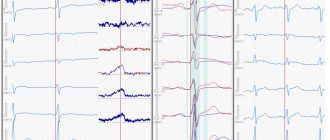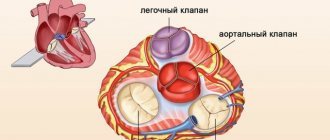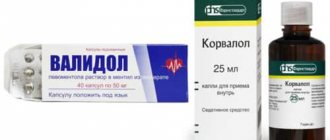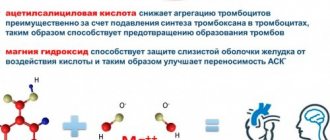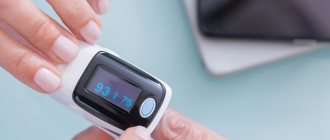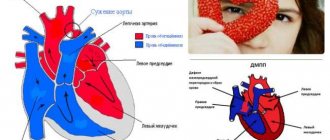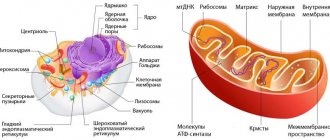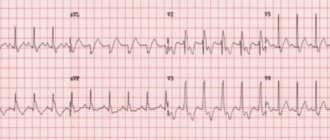Heart attacks, cardiac arrest and strokes are all serious conditions related to the heart, but too often people use the terms interchangeably without understanding the differences between the three. While the disorders are all (usually) related to the heart, they have different causes and symptoms, and it's important to know the characteristics of each so you can better identify and treat problems if they occur in your loved ones, or even yourself.
What is the difference between the three conditions?
Heart attack
It is a circulatory problem that occurs when arteries become blocked and the normal flow of oxygen through the blood to the chambers of the heart is prevented. The attack occurs when the coronary arteries, which are responsible for transporting blood to the heart, become smaller due to the accumulation of fatty substances, calcium and protein in them.
Over time, these deposits form a plaque that hardens on the outside. This can lead to rupture, causing blood clots to form around them. When these blood clots block the coronary arteries completely, blood cannot reach the heart, which ends up starving for oxygen. When this happens, the muscle cells in the heart begin to die and can become damaged, which is what constitutes a heart attack.
Causes of heart attack and stroke
Causes of development of ischemic cerebral infarction:
- increased blood viscosity;
- blood clots;
- decreased cerebral blood flow due to diseases of the heart, vascular system, and blood;
- age;
- physical inactivity;
- bad habits;
- pathology of the vertebral and carotid arteries.
Symptoms of ischemic stroke increase gradually. Over time, a cyst forms at the site of the area affected by ischemic cerebral infarction.
The main causes of hemorrhagic stroke:
- high blood pressure (hypertension);
- microangiopathy (pathological condition of the vessels responsible for metabolism).
Stroke
Stroke, also known as CVA, is actually a brain disorder that is often (but not always) caused by heart problems. This occurs when blood flow to the brain is reduced to the point where cells in the brain begin to die. There are two main types of stroke:
Ischemic: Resulting from blockages in the arteries, resulting in a lack of blood flow to the brain and the death of brain cells. This type of stroke involves the heart and circulatory system and is often confused with a heart attack or cardiac arrest.
Hemorrhagic: Caused by bleeding, usually caused by a rupture of an artery in the brain itself. They can sometimes be associated with traumatic injuries to the head, although the impact may occur long after the initial incident.
What are the symptoms of each condition?
All of these conditions can develop very suddenly, but there are often a number of indicators that people can use to help identify a developing problem. Some of the symptoms may be shared between the two conditions, but there are some differences that can help you tell them apart:
Heart attack. Stroke. First aid.
Etiopathogenesis
Without a constant flow and flow of blood, the cells of any living tissue experience oxygen starvation, deficiency of essential nutrients, and intoxication with metabolic products.
This condition is called ischemia. If there is simply not enough blood and if this lasts for a long time, the cells become sick and degenerate, i.e. degenerative-dystrophic processes begin in the tissue. Accordingly, the functions assigned by nature to this starving parenchyma (specialized tissue) are being performed less and less well. But if continuous blood circulation is reduced sharply or stops completely, cells die en masse. This happens very quickly, within several tens of minutes: the amount of time depends on the characteristics of a particular tissue, the scale and severity of ischemia. Heart attack, stroke are close synonyms, denoting the same pathological state of parenchymal tissue (brain, heart, kidney, retinal and any other): massive cell death in an area to which the flow of enriched arterial blood has been stopped or sharply reduced. We call a stroke a cerebral infarction with irreversible loss of certain functions.
The reasons are numerous, well studied and described in detail, incl. on the Internet: atherosclerosis, hypertension, thromboembolism of large vessels, arterial spasms, rupture of aneurysms, etc. The main risk factors are no less well known, but we tend to simply brush them aside: smoking, physical inactivity, stress, inedible food and all other components of the life of a civilized person who, by inertia, continues to call himself “reasonable.”
The heart muscle, or myocardium, has its own blood supply circuit: the so-called. coronary (coronary) arterial-venous system. Spare circle of blood circulation, i.e. The heart does not have an uninterruptible power supply: evolution cannot afford it, and it prepared the human body for completely different dangers and risks. The situation is approximately the same with the brain: in short, blood is supplied through four arteries, blood is discharged through two veins, and that’s all. At the same time, the heart and brain under load consume more than half of all the body’s energy resources, which are obtained by breathing and distributed by the bloodstream. Acute myocardial infarction is necrosis, the rapid death of one or another part of the heart muscle due to the lack of coronary circulation in it.
Ischemic stroke is focal necrosis in one or another area of the brain for a similar reason (stroke, acute cerebrovascular accident). Stroke differs from transient ischemic attack (TIA) by the persistent or irreversible nature of its consequences: brain dysfunction does not improve within 1-3 days.
Hemorrhagic stroke is the death of an area of the brain due to hemorrhage into the medulla or under the meninges. The absolute majority, however, are ischemic strokes; The share of hemorrhagic ones accounts for no more than 5-10%, but they are, as a rule, even more severe.
All of the listed conditions are life-threatening, highly lethal and urgent, i.e. requiring emergency assistance, including first aid.
Heart Attack Symptoms
Symptoms that indicate a heart attack may come and go, but the condition may also worsen over time. They are also likely to be more acute during physical activity.
- Chest pain: Also known as angina. Sufferers often describe a feeling of heaviness or tightness in the chest. This feeling often comes and goes and can easily be confused with indigestion.
- Pain and numbness in other areas of the body: Feelings of pain or discomfort in the arms, neck, or jaw are common indicators of cardiovascular disease. The left side of the body is more likely to experience more pain than the right side.
- Unexplained difficulty breathing, hoarseness, and extreme weakness.
- Fast or irregular pulse or heartbeat.
- Dizziness, nausea and vomiting.
- Intense and often unexplained feelings of anxiety.
Course of the disease
Cerebral infarction most often occurs in older people. Before an ischemic cerebral infarction, patients do not always complain of surges in blood pressure or any pronounced symptoms of trouble in the functioning of the blood vessels of the brain. Ischemic cerebral infarction occurs in people with normal blood pressure after nervous stress or heavy physical activity. Depending on the volume of the affected area and its location, brain function is restored. If the affected area is large and vital centers are affected, the patient may lose speech, and the consequences in the form of paralysis, tremors and other disorders of the nervous system will last a lifetime. Most often, the prognosis after an ischemic stroke (cerebral infarction) is favorable - patients recover within a few weeks, can live a long life, work, and take full care of themselves.
Hemorrhagic stroke is acute; about 70% of patients receive surgical treatment - low-traumatic puncture operations are performed to remove brain hematomas. The severity of the patient's condition depends on the location of the hemorrhage and the degree of vascular damage.
Highly qualified medical staff provide effective treatment and good care for patients after heart attack and stroke. Rehabilitation of patients takes place using high-quality European equipment - patients are helped to restore social skills with the help of exercise machines and special equipment, blood circulation in tissues is improved with the help of massage, psychologists and speech therapists work with patients after a stroke. For seriously ill patients after an ischemic or hemorrhagic stroke, the Yusupov Hospital operates a rehabilitation department. You can make an appointment with a neurologist by phone.
Symptoms of cardiac arrest
In more than half of cases, cardiac arrest occurs without symptoms, as a “sudden event.” However, some patients experience a range of symptoms in anticipation of the problem. These include:
- Rapid heartbeat or extreme heartbeat.
- Feelings of dizziness and disorientation.
- Loss of breath and chest pain.
Although these indicators can predict cardiac arrest, most people will be alerted to it by the most severe symptoms, such as sudden weakness or loss of consciousness. In most cases, it is therefore very difficult to distinguish a stroke from a heart attack in advance.
What is more dangerous: heart attack or stroke?
Both acute conditions often cause disability or even death. Therefore, no specialist can say unequivocally what is worse.
The consequences of extensive brain damage are more noticeable externally, and complete recovery requires significantly more time than rehabilitation after necrosis of an area of the myocardium. However, scars on the heart muscle also do not go away, and, unfortunately, it is not possible to talk about impeccable human health even with the most favorable outcome.
Unlike damage to the heart and brain, with necrosis of other organs, the likelihood of the patient dying even before the ambulance arrives is many times less, but these pathologies are no less dangerous and lead to their own complications.
People who have once suffered acute circulatory disorders and undergone complete rehabilitation are not immune from repeated attacks. If there is a history of ischemia or cerebral hemorrhage, this does not exclude the further development of myocardial necrosis and vice versa. Moreover, the probability of patient death in such cases is usually higher.
Since the causes are often the same, the approach to disease prevention is also common. To prevent life-threatening conditions, it is necessary not to neglect identified circulatory disorders, give up tobacco and alcohol, make certain adjustments to the diet and lead an active lifestyle. Remember that preventing these severe disorders is many times easier than coping with their consequences.
Symptoms of a stroke
Many of the early symptoms of a stroke are neurological and may begin to appear in the weeks and months before the attack. Symptoms to watch out for include:
- Severe headaches that may be accompanied by a feeling of dizziness.
- Confusion, forgetfulness and memory loss. Inability to speak clearly or remember anything from the past.
- Blurred vision in one or both eyes and slurred speech.
- Coordination problems leading to problems walking or lifting objects.
- Nausea, illness and excessive sweating.
- Partial or complete loss of feeling and function in the arms, legs and mouth. It usually affects one side of your body.
What is commonly confused between these disorders?
It should be noted that during a heart attack the heart continues to beat, but during cardiac arrest it stops altogether (or the power of the beating is significantly reduced) due to an electrical malfunction. Those who have previously had a heart attack are at greater risk of cardiac arrest.
Doctor
A heart attack is also more likely to occur as a result of symptoms gradually developing and worsening over time (although sometimes, people can have a heart attack despite having no symptoms at all - a condition known as a "silent" heart attack).
Stroke symptoms, meanwhile, vary and usually affect the sufferer's head or motor skills. Since the causes of stroke can be attributed to the heart's inability to pump enough blood to the brain, it actually occurs as a result of sudden cardiac arrest (which is actually one of the main causes of stroke).
What should you do?
You do not need to live in fear because of any disorder, but you should always contact your doctor if you have any concerns that you have such symptoms. Heart attacks and strokes in particular do often provide notice of an upcoming event, and treatment can prevent disaster.
The best ways to ensure that you do not have such problems are to live a healthy lifestyle, avoid bad habits, eat well and exercise regularly. Also, see your doctor for regular checkups, especially if you have any symptoms that may be related to these conditions.
Symptoms of diseases
Ischemic stroke is characterized by dizziness, dark vision, numbness in the limbs - a feeling of numbness appears in the arm or leg, in some cases symptoms appear on one half of the body. The patient's speech becomes incoherent or he cannot speak at all for some time. The face and lips may become distorted - facial paralysis develops. This occurs due to damage to a part of the brain and its failure to perform its functions. With timely assistance, functionality is restored - healthy areas of the brain begin to be responsible for speech, muscle function and other functions.
Hemorrhagic stroke is characterized by an acute course of the disease, the appearance of the following symptoms:
- a sharp decrease in visual acuity;
- loss of consciousness;
- photophobia;
- tinnitus;
- headache;
- vomiting, severe nausea;
- redness of the face and body;
- unsteady gait;
- convulsions;
- paralysis of one side of the face;
- paralysis of one side of the body;
- impaired coordination of movements;
- the patient speaks poorly, gets confused in words;
- coma.
It is very important to provide first aid for a brain stroke as early as possible. The patient is admitted to the hospital, diagnostics are carried out, seizures are eliminated, brain swelling is relieved, and the patient’s condition is stabilized. On the basis of the Yusupov Hospital there is a hospital, an intensive care unit, and a rehabilitation unit for patients after serious illnesses. If necessary, resuscitation measures will be carried out at the Yusupov Hospital and the seriously ill patient will be cared for.
